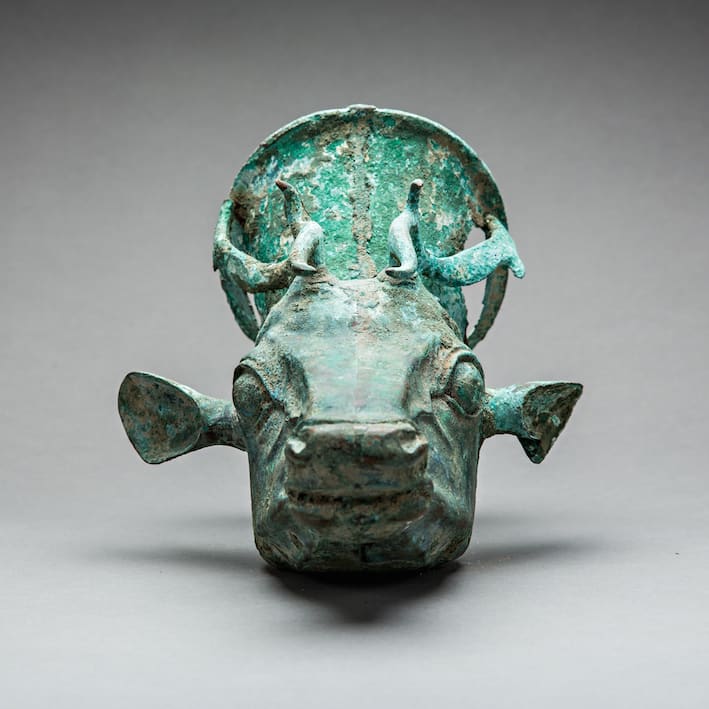Achaemenid Style Bronze Rhyton in the form of a Gazelle's head
Bronze
height 25.9 cm
height 10 1/4 in
height 10 1/4 in
LO.1274
Further images
The animal- headed rhyton combines the older Near Eastern traditions of animal-shaped cups and Iranian zoomorphic vessels. The horn-shaped vessels ending in the head of animals have a long history...
The animal- headed rhyton combines the older Near Eastern traditions of animal-shaped cups and Iranian zoomorphic vessels. The horn-shaped vessels ending in the head of animals have a long history in the Near East. Notably the rhytons, vessels which have a hole at the front from which liquid flows, were highly valued in ancient Near Eastern society. During the pre-Achaemenid and Achaemenid periods, examples made of silver and gold were used throughout a vast area extending both to the east and west of Iran. The animals on these vessels included the ram, horse, bull, ibex and supernatural creatures. Early Iranian examples are straight with the cup and animal head in the same plane. Later, in the Achaemenid period, the animal decoration was often connected at a right angle and the head placed horizontally to the beaker as the part of terminating. The rhytons, especially made of precious materials, were the symbol of the high status because these luxury wares were used by the upper status who had been invited to royal banquets. These ancient Near Eastern art pieces became objects of artistic imitation and a source of inspiration until later generations into the 19th century.
28
of
28







